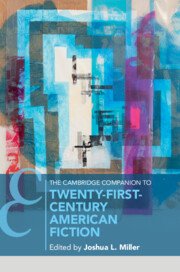Book contents
- The Cambridge Companion to Twenty-First-Century American Fiction
- The Cambridge Companion to Twenty-First-Century American Fiction
- Copyright page
- Contents
- Illustrations
- Contributors
- Acknowledgments
- Chronology
- Introduction
- Part I Forms
- Part II Approaches
- 6 Afro-Futurism/Afro-Pessimism
- 7 Transpacific Diasporas
- 8 Hemispheric Routes
- 9 Transgender and Transgenre Writing
- 10 Climate Fiction
- Part III Themes
- Further Reading
- Index
7 - Transpacific Diasporas
from Part II - Approaches
Published online by Cambridge University Press: 02 September 2021
- The Cambridge Companion to Twenty-First-Century American Fiction
- The Cambridge Companion to Twenty-First-Century American Fiction
- Copyright page
- Contents
- Illustrations
- Contributors
- Acknowledgments
- Chronology
- Introduction
- Part I Forms
- Part II Approaches
- 6 Afro-Futurism/Afro-Pessimism
- 7 Transpacific Diasporas
- 8 Hemispheric Routes
- 9 Transgender and Transgenre Writing
- 10 Climate Fiction
- Part III Themes
- Further Reading
- Index
Summary
Julia Lee identifies temporal, spatial, and affective innovation in 21st century transpacific fiction. Locating formally innovative contemporary Asian American writing in the post-1965 contexts of migration, global economies of labor, environmental anxiety, language difference, and racialized violence, Lee shows how writers have represented new technologies of immediate communication across oceanic flows of migrants, commodities, information, and waste in disjointed, parallel, and non-sequential narrative structures. Childhood trauma lingers across time and geography in a story about a Filipino nurse by Mia Alvar, while novels by Min Jin Lee, Ruth Ozeki, and Thi Bui layer Asian and American modernities, postmodernities, and contemporary present-tenses.
Keywords
- Type
- Chapter
- Information
- The Cambridge Companion to Twenty-First Century American Fiction , pp. 142 - 156Publisher: Cambridge University PressPrint publication year: 2021

